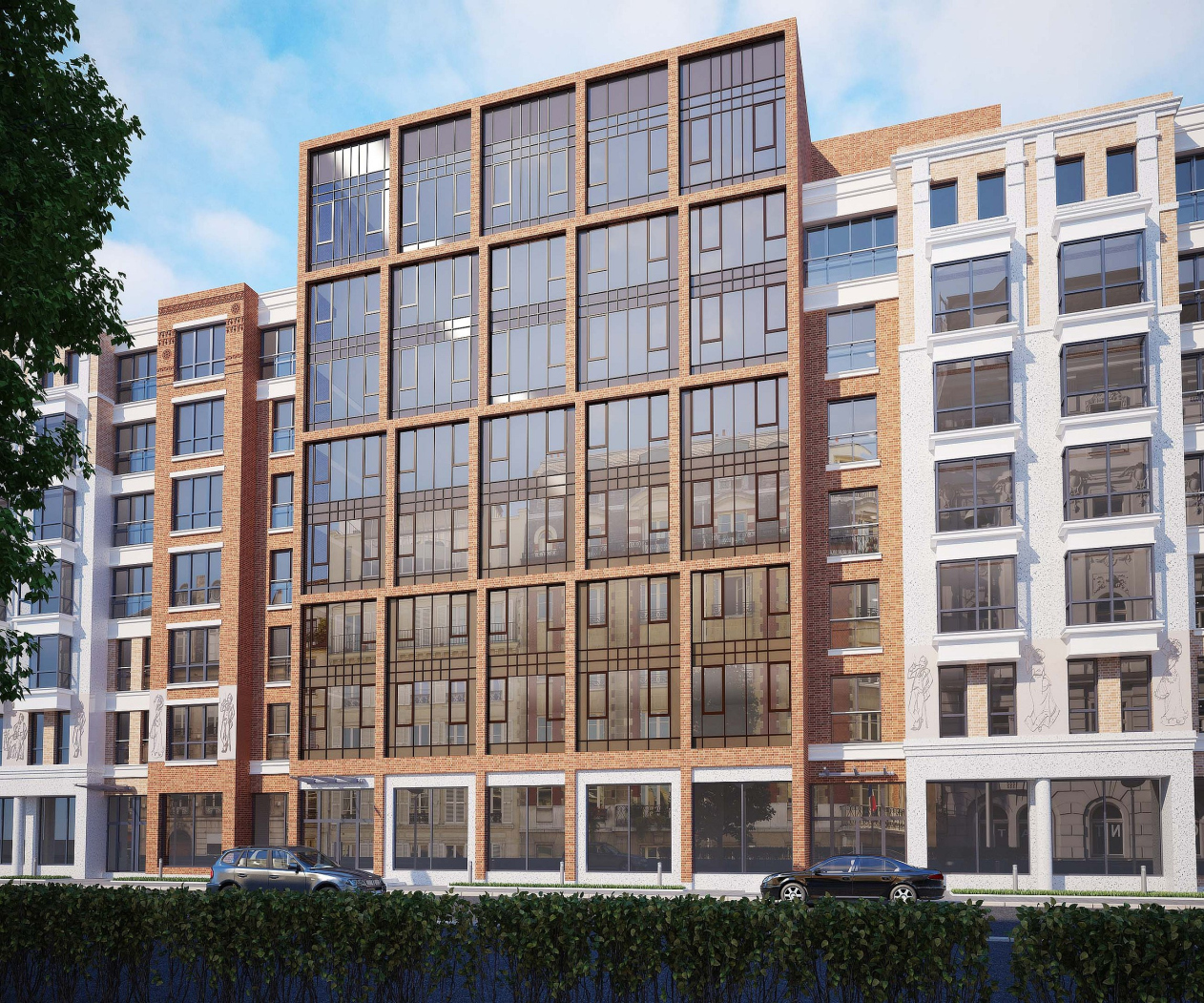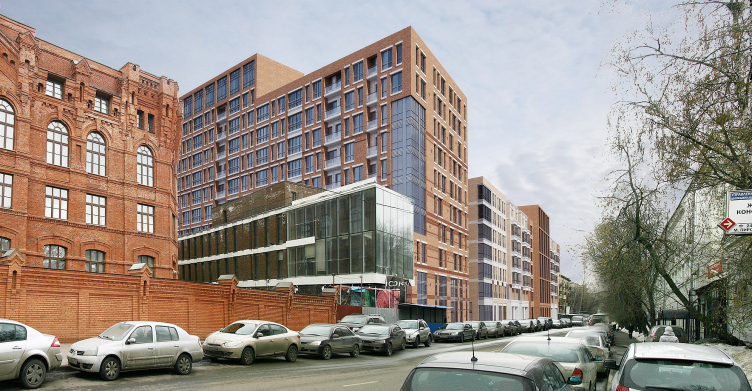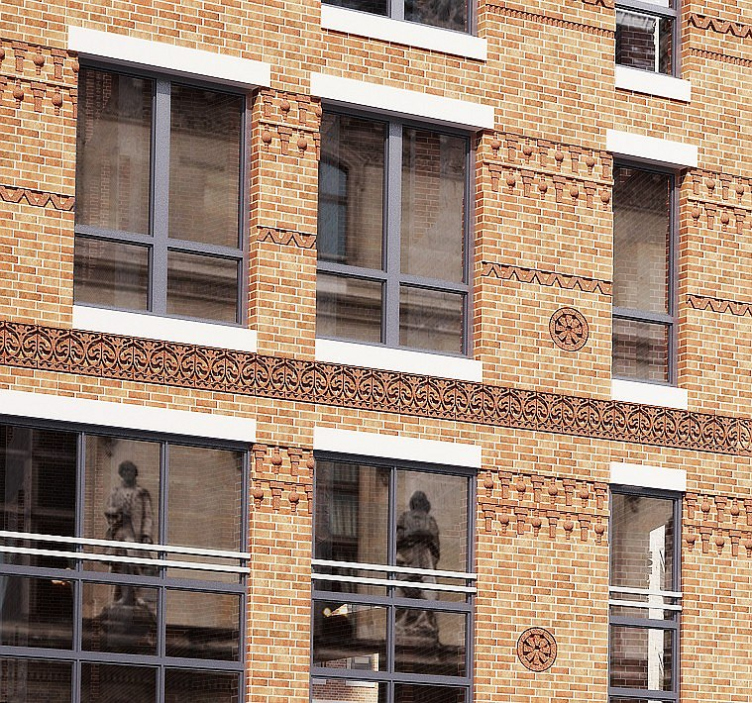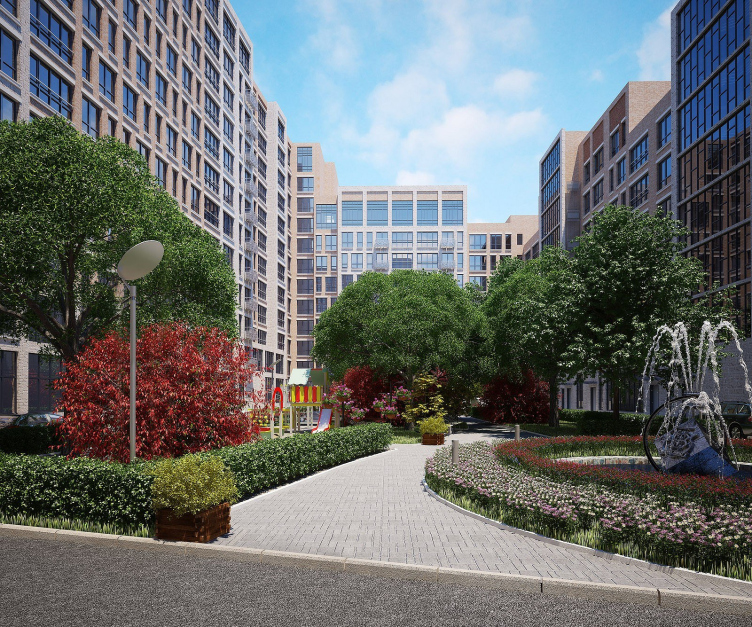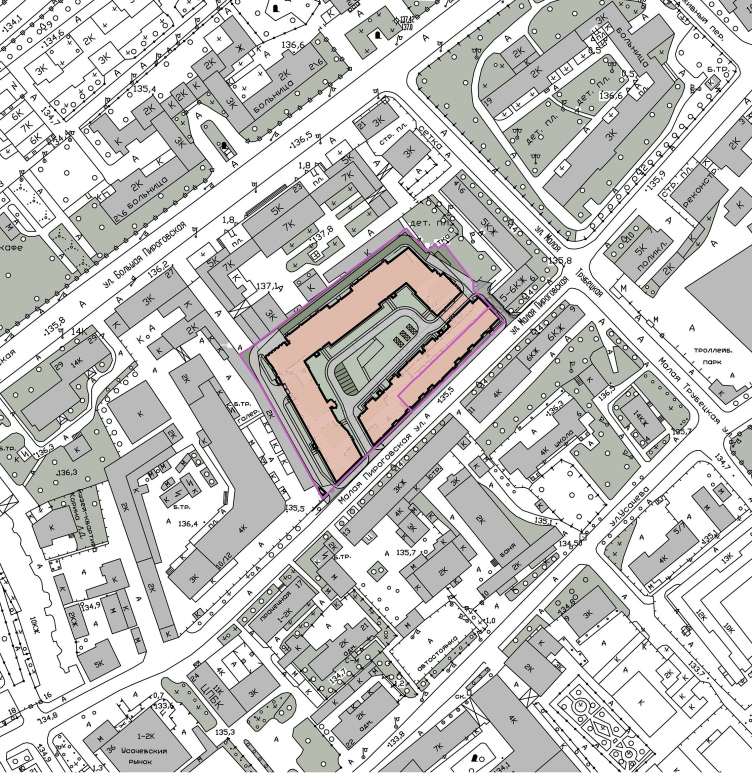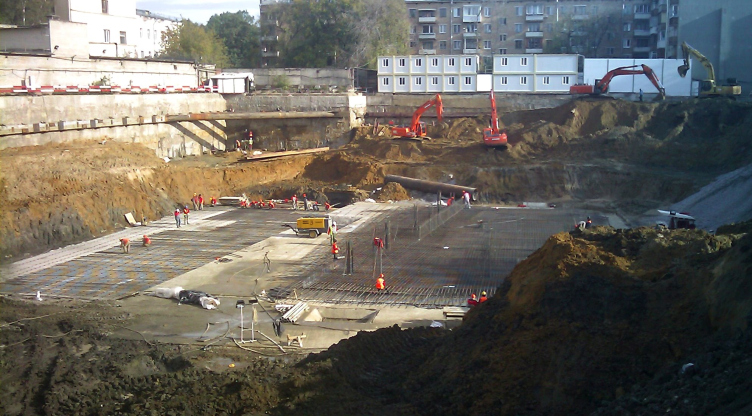The
construction site on
In the brick facades with large rectangular windows, one can indeed see the
traits of the late XIX century industrial buildings located nearby or the
regular houses of the Stalin era. The architects deliberately created this
“reverberating” effect - they wanted to achieve maximum harmony when inscribing
the all-too-bulky complex into the context of the narrow streets and its
already-existing buildings: the main facade is dissected into vertical
fragments, which creates the illusion of a whole set of lively-looking houses
and helps to avoid the monotony of the lengthy front side.
The landscape solution of the yard that will only serve the residents of the
complex, employs, on the other hand, the traditions of old estate planning.
Here the landscape centerpiece is the alley with its perspective crowned by a
fountain; these are not the only landmarks of this area, however. The yard is
going to get a polygon composition decorated with mosaic that will not only
adorn the yard but will also make its planning look more sophisticated by zoning
the children's and the grown-ups' areas apart from one another. The composition
serves a functional purpose as well: it works as the camouflage of the light
dome of the fitness center’s swimming pool that is there in the semi-basement
floor under the yard.
This project draws attention, first of all, by the exquisiteness of all of its
details. The reserved facade of he house, neatly woven into the fabric of the
historic street, arrests your attention most of all when viewed from a close
range: the combination of stones and bricks, the plastics that adorn the window
lintels, the bass relief, and the wrought iron railings of the balconies – “ABV
Group” stays true to itself in terms of its meticulous approach to even the
tiniest of the decorative elements.
Creating Traditions
On Moscow's Malaya Pirogovskaya Street, “ABV Group” Architectural Bureau has designed a residential complex with its layout and architecture based on the theme of Moscow estates of the days past.
